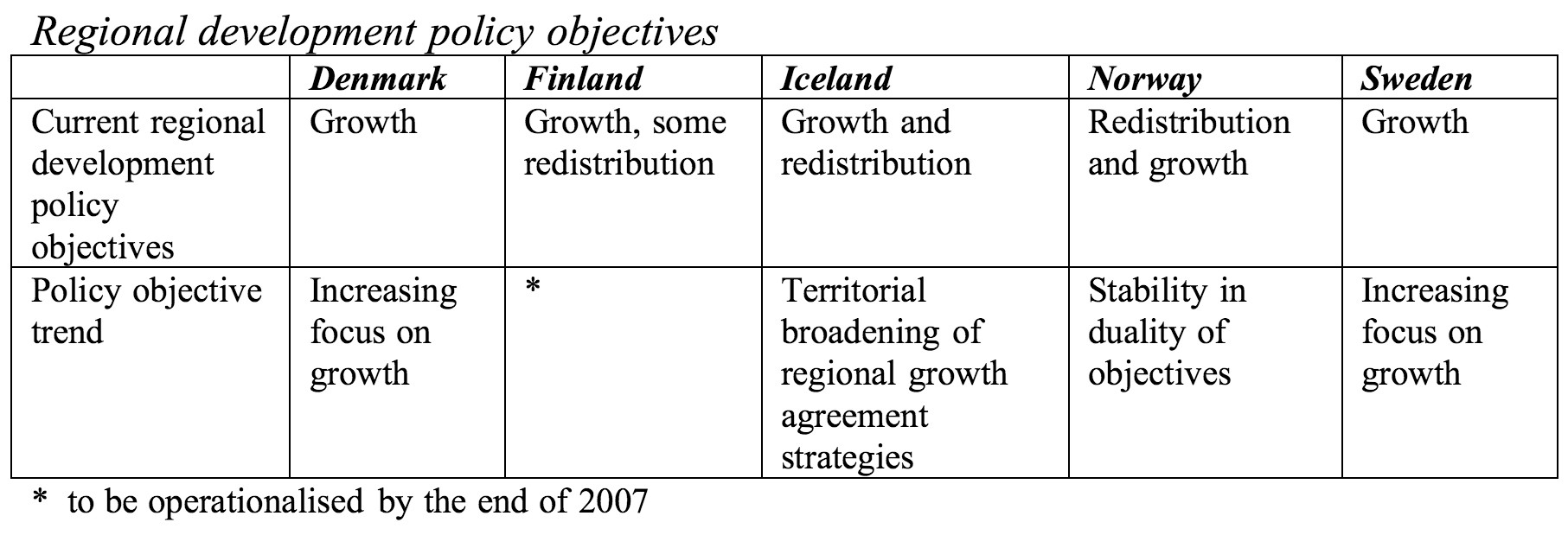Regional development policy objectives have traditionally been a balancing act between promoting re-distributional goals (supporting 'lagging' regions) and socio-economic growth objectives (supporting leading regions and regional centres). The regional development policy objectives were borne out of the labour market policies of the 1950s and 1960s, so as to expand economic activities to less central areas.
In recent years, the focus of regional development policies has shifted from redistribution objectives (reducing territorial disparities and improving national cohesion) to regional development (economic growth) objectives and territorial integration. Following the economic downturns of the late 1980s and early 1990s, regional growth issues came to the fore in several of the Nordic countries. Internationally, the old approach, focussing on redistribution from leading to 'lagging' regions has been replaced by increased emphasis on building competitive regions by bringing local actors and assets together.
After 1995, when both Finland and Sweden became members of the EU, regional development policies and industrial policies have become increasingly intertwined, as growth objectives have become more prominent in both countries.
However, these policy shifts are not unambiguous. As noted by the Swedish Institute for Growth Policy Studies (ITPS) in a recent report, even regional policy instruments with an explicit growth objective may incorporate re-distributional ambitions, as former regional policy goals may remain in operation – although informally - within some regional policy implementation bodies.
In Denmark the globalisation strategy of the current government (as of October 2007) maintains a strong focus on economic growth as a regional development strategy. In Finland, the new Vanhanen II government echoes the Danish approach, stating that its regional policy objective is to increase the international competi-tiveness of the regions while also providing for regional specialization, basic public services and network cooperation.
In Sweden, the centre-right government introduced a new regional development policy objective in their autumn budget in September 2007. The former policy objective of regional development so as to provide for "well-functioning and sustainable local labour market regions with good services in all parts of the country" has been replaced by a more explicit growth objective that states that "the objective of regional growth policies shall be to promote development in all parts of the country with improved local and regional competitiveness".
In the non-EU0 states of Norway and Iceland, both counties try to pay attention to both the growth and redistribution objectives in the regional development policy field. Norway is currently in the midst of launching a major study to assess the effects of its combinatorial regional development policy.

Click to view larger image.
By Jon M. Steineke, previous Research Fellow at Nordregio